It looks like you're using an Ad Blocker.
Please white-list or disable AboveTopSecret.com in your ad-blocking tool.
Thank you.
Some features of ATS will be disabled while you continue to use an ad-blocker.
share:
Interesting.
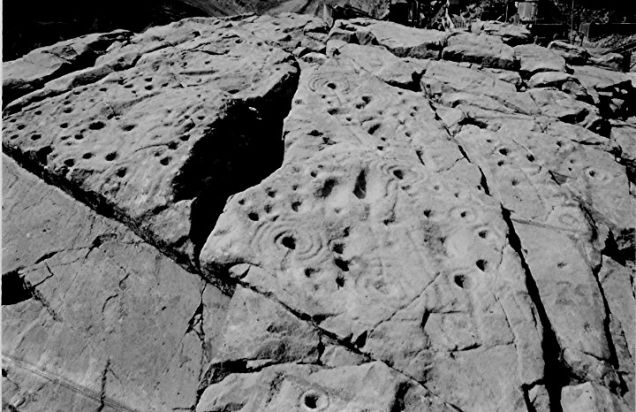
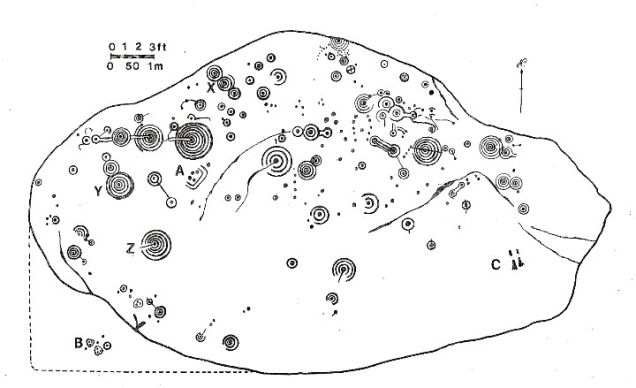

Link to full story.
It's in Faifley, about 5 mins down the road from me so I'm hoping to take a gander at it myself.
Created by people living 5,000 years ago in Scotland, the Cochno Stone is a beautiful example of ancient European "cup and ring" carving. These are created by making grooves and indentations in the rock, creating vast, swirling patterns that may have guided rivulets of liquid during ceremonies.
The Cochno Stone was covered in dirt during the 1960s because it was being damaged by visitors. But now, reports Craig Brown in The Scotsman, they may be unveiled again. Scientists and historians are still struggling to figure out what they mean:

History researcher Alexander McCallum, who has lobbied to have the stone uncovered, said there were multiple interpretations for the carvings.
He said: "Some people think that the Cochno Stone is a map showing the other settlements in the Clyde Valley – that's one of the theories. I think it was probably used for lots of things; it was never used for just one thing and over hundreds of years it changed use.
"As far as the symbolism goes, some believe it's a portal, of life and death, rebirth, a womb and a tomb – people believed in reincarnation, so they would go into the earth and then come out again."
He said it was also possible the stone had been used in sacrificial ceremonials, with milk or water poured into the grooves and channels as offerings, or that the markings were astronomical maps, showing constellations that guided prehistoric farmers' crop sewing.
Mr McCallum said similar carvings had been found around the world, including in Hawaii, India and Africa, while in Scotland they tended to be found along the west coast near the sea or rivers, often close to copper mines.


Link to full story.
It's in Faifley, about 5 mins down the road from me so I'm hoping to take a gander at it myself.
a reply to: Ramcheck
That is interesting, and not a million miles away from me either. It's hard not to link the double discs into that, it really is. I keep feeling like I'm missing something glaringly obvious.
Sea, river, copper mine.
And for our era we're looking at folk who came from over seas, sea people, who worked metals.
That is interesting, and not a million miles away from me either. It's hard not to link the double discs into that, it really is. I keep feeling like I'm missing something glaringly obvious.
Mr McCallum said similar carvings had been found around the world, including in Hawaii, India and Africa, while in Scotland they tended to be found along the west coast near the sea or rivers, often close to copper mines.
Sea, river, copper mine.
And for our era we're looking at folk who came from over seas, sea people, who worked metals.
I still can't put my finger on it, and it's driving me mad! On the plus side, I can now read Ogham (with difficulty) and have learned a lot about
ancient Irish laws.
As an interesting aside:
www.libraryireland.com...
The Brehon Laws, incidentally, were just the laws used from antiquity until the english got rid of them in 17-0-something.
But interesting, as the law required boundaries to be marked by pillar stones in Ireland, and so it's not such a stretch to think it could have been a requirement in Scotland too.
Oh!
I know what the cauldrons are! Ha ha ha! I'm half watching the common wealth games and there they are!! Lol!
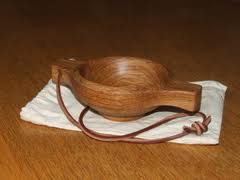
I bet that's what they are.
As an interesting aside:
Pillar-stones were worshipped in other parts of Ireland as well as at Moy-Slecht and Clogher. The Dinnsenchus, after speaking of Cromm Cruach and the other twelve, remarks that from the time of Heremon to the coming of the good Patrick of Armagh, there was adoration of pillar-stones in Ireland: a statement which we find also in other old authorities. In the Brehon Laws, one of the objects used for marking the boundaries of land is stated to be "a stone of worship." This interesting record at once connects the Irish custom with the Roman worship of the god Terminus, which god was merely a pillar-stone placed standing in the ground to mark the boundary of two adjacent properties—exactly as in Ireland. Even to this day some of these old idols or oracle-stones are known; and the memory of the rites performed at them is preserved in popular legend.
www.libraryireland.com...
The Brehon Laws, incidentally, were just the laws used from antiquity until the english got rid of them in 17-0-something.
But interesting, as the law required boundaries to be marked by pillar stones in Ireland, and so it's not such a stretch to think it could have been a requirement in Scotland too.
Oh!
I know what the cauldrons are! Ha ha ha! I'm half watching the common wealth games and there they are!! Lol!

The Quaich (pronounced "quake", from the Gaelic word "cuach") has a rich heritage in Scotland - indeed, they are a uniquely Scottish invention, having no apparent connection to any other European drinking vessel. This traditional Scottish drinking vessel was used to offer a guest a cup of welcome and also as a farewell drink, usually a dram of whisky. Travellers were known to carry a quaich with them.
I bet that's what they are.
edit on 25-7-2014 by beansidhe because: Hey, hey!
Quaich, yes. it was... well not really funny, more frustrating when the Commonwealth Games commentators (alll English) couldn't describe what a Quaich
was (Didn't know what it was) They clearly didn't do their homework.
TBH Clare Balding is frustratingly stupid at the best of times, but she is Aristocracy so... Jobs for the boys / girls..
TBH Clare Balding is frustratingly stupid at the best of times, but she is Aristocracy so... Jobs for the boys / girls..
edit on 25/7/14 by
Ramcheck because: meh
a reply to: Ramcheck
Why are they all english? I noticed that. Balding is a nit, you're right.
I'm leaving this here too, because it just fascinated me. This person has spent time examining the Book of Kells and what he has found in the Chi-rho page alone is amazing. It reminds me of the Celtic coins, and the faces that they hid in the designs:
Chi rho page
St John page
Here's St John, for example:
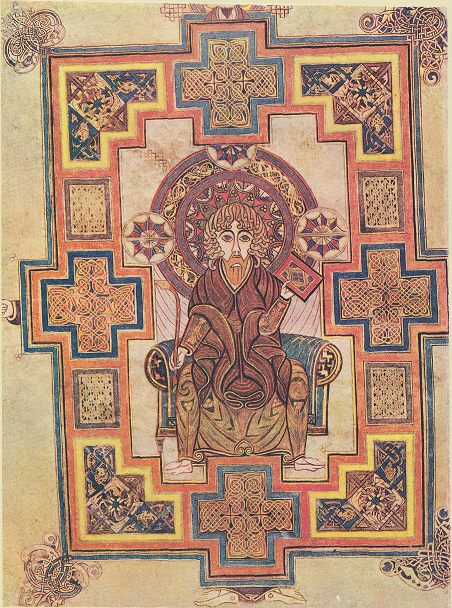
You'll notice he has hands for feet, and an extra pair of feet under the frame, at the bottom. Why? Idiotic monks making a mistake? Unlikely.
But look closely and you'll realise that the hands belong to a separate person, wearing a turban, kneeling in front of St John, with his face towards the floor. The extra feet are actually St John's.
Once you see it, it's impossible to 'unsee' it! I wonder if our stones are like that too- the same love of hidden symbolism and double or treble meanings. (Irritating if so, lol).
Why are they all english? I noticed that. Balding is a nit, you're right.
I'm leaving this here too, because it just fascinated me. This person has spent time examining the Book of Kells and what he has found in the Chi-rho page alone is amazing. It reminds me of the Celtic coins, and the faces that they hid in the designs:
Chi rho page
St John page
Here's St John, for example:

You'll notice he has hands for feet, and an extra pair of feet under the frame, at the bottom. Why? Idiotic monks making a mistake? Unlikely.
But look closely and you'll realise that the hands belong to a separate person, wearing a turban, kneeling in front of St John, with his face towards the floor. The extra feet are actually St John's.
Once you see it, it's impossible to 'unsee' it! I wonder if our stones are like that too- the same love of hidden symbolism and double or treble meanings. (Irritating if so, lol).
This is interesting, back in the realms of Taliesin and the Welsh bards:
Morien Institute
A lightning stone? Could it be...?
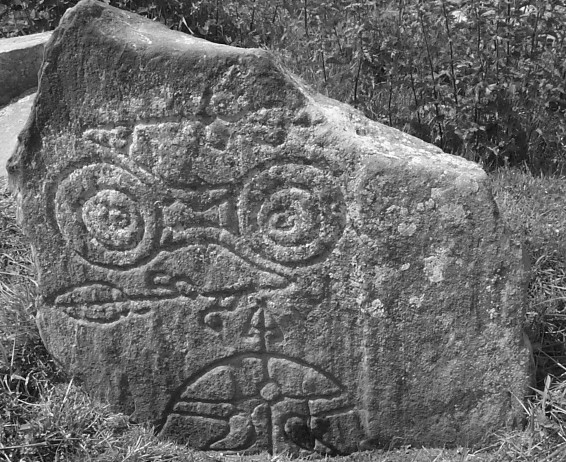
The mystery of the origins of the red dragon symbol, now on the flag of Wales, has perplexed many historians, writers and romanticists, and the archæological community generally has refrained from commenting on this most unusual emblem, claiming it does not concern them. In the ancient Welsh language it is known as 'Draig Goch' - 'red dragon', and in "Y Geiriadur Cymraeg Prifysgol Cymru", the "University of Wales Welsh Dictionary", (Cardiff, University of Wales Press, 1967, p. 1082) there are translations for the various uses of the Welsh word 'draig'. Amongst them are common uses of the word, which is today taken just to mean a 'dragon', but in times past it has also been used to refer to 'Mellt Distaw' - (sheet lightning), and also 'Mellt Didaranau' - (lightning unaccompanied by thunder).
But the most interesting common usage of the word in earlier times, according to this authoritative dictionary, is 'Maen Mellt' the word used to refer to a 'meteorite'. And this makes sense, as the Welsh word 'maen' translates as 'stone', while the Welsh word 'mellt' translates as 'lightning' - so literally a 'lightning-stone'.
That the ancient language of the Welsh druids has words still in use today which have in the past been used to describe both a dragon and also a meteorite, is something that greatly helps us to follow the destructive 'trail of the dragon' as it was described in early Welsh 'riddle-poems'.
Morien Institute
A lightning stone? Could it be...?

a reply to: Logarock
Hi, not so bad. Glad you dropped by, and hope you're enjoying the summer. We've had sun here for a few days in a row - unprecented! You haven't linked that article before, just the site (which is excellent) and I spent a while last night reading through. Fighting at dinner - hmm the Celts haven't really changed much over the years!
Which makes me think that these symbols must still be in folklore and stories somewhere.
Hi, not so bad. Glad you dropped by, and hope you're enjoying the summer. We've had sun here for a few days in a row - unprecented! You haven't linked that article before, just the site (which is excellent) and I spent a while last night reading through. Fighting at dinner - hmm the Celts haven't really changed much over the years!
Which makes me think that these symbols must still be in folklore and stories somewhere.
a reply to: beansidhe
Weather around here has been mild for summer and well just spectacular.
Yes it must be around somewhere! We have found just about everything else!
As far as Celtic disposition some of the later Roman writers said much of the same thing about them. The fact that they wouldn't fight as an organized unit, like say the Romans or Greeks for the longest time says something about them. The highly organized and tactical Romans ended up in the long run beating most of them although I have read that the Romans never really defeated the Silurian's but rather they sort of had a conditional peace.
Something changed in Scotland. I would say they became extremely tactical and organized somehow.
Weather around here has been mild for summer and well just spectacular.
Yes it must be around somewhere! We have found just about everything else!
As far as Celtic disposition some of the later Roman writers said much of the same thing about them. The fact that they wouldn't fight as an organized unit, like say the Romans or Greeks for the longest time says something about them. The highly organized and tactical Romans ended up in the long run beating most of them although I have read that the Romans never really defeated the Silurian's but rather they sort of had a conditional peace.
Something changed in Scotland. I would say they became extremely tactical and organized somehow.
“We have reasonable grounds for regarding the Gimirri, or Cimmerians, who first appeared on the confines of Assyria and Media in the seventh century B.C., and the Sacae of the Behistun Rock, nearly two centuries later, as identical with the Beth-Khumree of Samaria, or the Ten Tribes of the House of Israel.”[9]
Link
Gimirri or Cimmerians-Cymry the people, Cymraeg or y Gymraeg, the language. I mean really, talk about a etymological no brainer.
Sacae-Saxon
a reply to: Logarock
It's very, very similar to Steaton's affinity between Hebrew and Gaelic (Scottish), and of course gets flamed by an 'expert' in linguistics.
It's also Alan Wilson's point about the truth being in plain sight and a refusal by those whose agendas it does not benefit to deny it. Cymry is one of the best examples, I think. I wonder if there was a Pettr/Peyht type group that the Picts and Pictones both came from? I'll need to look.
The Romans couldn't gain a foothold in Scotland and never tried for Ireland. It does suggest a unified front against the Romans, as if they knew there was no point in trying for Ireland because it was the same folk going back and forth, organising to meet them. The notion of disorganised groups doesn't ring true anyway, as the symbols on the stones are the same! It couldn't be clearer that they shared a common belief or beliefs.
This has a smell of suppressed information to me, because to claim it is forgotten just seems unlikely now. It wasn't that long ago!
Glad to hear your weather is good, nothing worse than a miserable summer. There's a 9th legion of blackbirds with an eye on my plum tree, but I'm defending it Pictishly, lol!
I firmly believe we're going to find the remaining symbols - they are in someone's folklore, we just need to find out whose.
AMOSKEAG one who takes small-fish
AMMO-IASGAG small fish stream
AMMONOOSUC small fishing river
AM'MIN-A-SUGH small-river-for taking-out (fish)
MERRIMAC deep fishing
MOR-RIOMACH of great depth
NASHAWAY land between
NAISG-UIR ground connected ? ?
PISCATAQUA white stone
PIOS-CATA'-CUA pieces of snow white stone
QUECHEE pit or chasm
CUITHE pit or chasm
It's very, very similar to Steaton's affinity between Hebrew and Gaelic (Scottish), and of course gets flamed by an 'expert' in linguistics.
It's also Alan Wilson's point about the truth being in plain sight and a refusal by those whose agendas it does not benefit to deny it. Cymry is one of the best examples, I think. I wonder if there was a Pettr/Peyht type group that the Picts and Pictones both came from? I'll need to look.
The Romans couldn't gain a foothold in Scotland and never tried for Ireland. It does suggest a unified front against the Romans, as if they knew there was no point in trying for Ireland because it was the same folk going back and forth, organising to meet them. The notion of disorganised groups doesn't ring true anyway, as the symbols on the stones are the same! It couldn't be clearer that they shared a common belief or beliefs.
This has a smell of suppressed information to me, because to claim it is forgotten just seems unlikely now. It wasn't that long ago!
Glad to hear your weather is good, nothing worse than a miserable summer. There's a 9th legion of blackbirds with an eye on my plum tree, but I'm defending it Pictishly, lol!
I firmly believe we're going to find the remaining symbols - they are in someone's folklore, we just need to find out whose.
Wow its great to catch you online!
Here is something. The two bulls in the Hittite. Seri and Hurri they are called. As well as related material you will recognize.
One Link
Apparently the Hittites had twin bulls in this idea symbolizing night and day ect. Two halves. As well as a related kingdom in the area. Did we have double bulls on the Pict Stones? Can you post the Bull Picts?
At some rate this idea of equal halves comes into play. Equinox. The split kingdom.
Deuteronomy 33
From Moses’ Final Blessing on tribes Israel. The above is the particular blessing on the leading tribes, the birth right tribe, tribes, known as Joseph, Ephraim, Israle. Depending on the context you get one name or another but its not really complicated.
Also note...."with the choicest fruits of the sun
and the rich yield of the months"
months here is also translated MOON in some translation, older. They are interchangeable but moon, really here meaning the same thing as month, was changed to month, or month is used for better understanding in modern times. Like we don't say "many moons ago" anymore.
However MOON is the meaning here and conforms with SUN and shows conjunction, two part, equality of purpose, purpose interwoven.
See you later!
Here is something. The two bulls in the Hittite. Seri and Hurri they are called. As well as related material you will recognize.
One Link
Apparently the Hittites had twin bulls in this idea symbolizing night and day ect. Two halves. As well as a related kingdom in the area. Did we have double bulls on the Pict Stones? Can you post the Bull Picts?
At some rate this idea of equal halves comes into play. Equinox. The split kingdom.
“Blessed by the Lord be his land,13And of Joseph he said,
“Blessed by the Lord be his land,
with the choicest gifts of heaven above,j
and of the deep that crouches beneath,
14with the choicest fruits of the sun
and the rich yield of the months,
15with the finest produce of the ancient mountains
and the abundance of the everlasting hills,
16with the best gifts of the earth and its fullness
and the favor of him who dwells in the bush.
May these rest on the head of Joseph,
on the pate of him who is prince among his brothers.
17A firstborn bull—he has majesty,
and his horns are the horns of a wild ox;
with them he shall gore the peoples,
all of them, to the ends of the earth;
they are the ten thousands of Ephraim,
and they are the thousands of Manasseh.”
Deuteronomy 33
From Moses’ Final Blessing on tribes Israel. The above is the particular blessing on the leading tribes, the birth right tribe, tribes, known as Joseph, Ephraim, Israle. Depending on the context you get one name or another but its not really complicated.
Also note...."with the choicest fruits of the sun
and the rich yield of the months"
months here is also translated MOON in some translation, older. They are interchangeable but moon, really here meaning the same thing as month, was changed to month, or month is used for better understanding in modern times. Like we don't say "many moons ago" anymore.
However MOON is the meaning here and conforms with SUN and shows conjunction, two part, equality of purpose, purpose interwoven.
See you later!
a reply to: Logarock
Aargh, missed you! I was clearing up lego.
Bull stones are interesting - there are only 10 listed, 1 is almost completely eroded, and the other 9 are fragments.
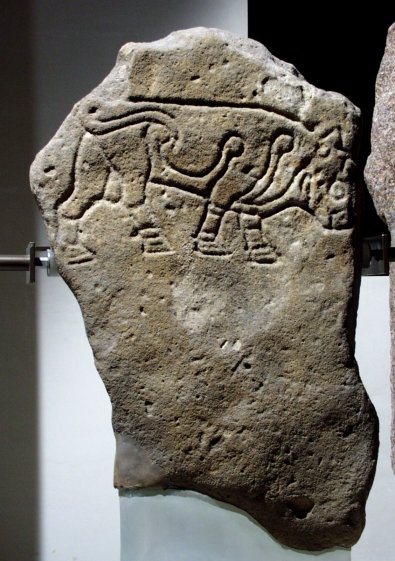
One of the Burghead ones above; 6 remain and were thought to surround the town at one point, Burghead being a major centre at one time.
'Many moons ago' is still pretty common here, I have to admit. Night and day duality feels right somehow.
Aargh, missed you! I was clearing up lego.
Bull stones are interesting - there are only 10 listed, 1 is almost completely eroded, and the other 9 are fragments.

One of the Burghead ones above; 6 remain and were thought to surround the town at one point, Burghead being a major centre at one time.
'Many moons ago' is still pretty common here, I have to admit. Night and day duality feels right somehow.
originally posted by: Logarock
“We have reasonable grounds for regarding the Gimirri, or Cimmerians, who first appeared on the confines of Assyria and Media in the seventh century B.C., and the Sacae of the Behistun Rock, nearly two centuries later, as identical with the Beth-Khumree of Samaria, or the Ten Tribes of the House of Israel.”[9]
Link
Gimirri or Cimmerians-Cymry the people, Cymraeg or y Gymraeg, the language. I mean really, talk about a etymological no brainer.
Sacae-Saxon
Hi guys!
This is probably a very very small point but in the tradition of me stating the obvious!!... did you notice in the main body of text from Log's link -
Sargon records his first campaign on the walls of the royal palace at Dur-Sharrukin (Khorsabad):
In my first year of reign *** the people of Samaria *** to the number of 27,290 ... I carried away.
Fifty chariots for my royal equipment I selected. The city I rebuilt. I made it greater than it was before.
People of the lands I had conquered I settled therein. My official (Tartan) I placed over them as governor. (L.ii.4.) [4]
Tartan?
Could this be where the early Celts got their association with tartan cloth?
G
new topics
-
Mysterious Spiral 'UFO' Sightings Reported Across US, Europe
Aliens and UFOs: 1 hours ago -
The Dark Pyramid of Alaska and the Why Files take on the subject
Whistle Blowers and Leaked Documents: 5 hours ago -
Israeli strikes on southern Gaza city of Rafah kill 22, mostly children, as US advances aid package
Middle East Issues: 11 hours ago
top topics
-
The Dark Pyramid of Alaska and the Why Files take on the subject
Whistle Blowers and Leaked Documents: 5 hours ago, 9 flags -
Really Unexplained
Paranormal Studies: 17 hours ago, 5 flags -
Israeli strikes on southern Gaza city of Rafah kill 22, mostly children, as US advances aid package
Middle East Issues: 11 hours ago, 5 flags -
The Vaccine Injured
Medical Issues & Conspiracies: 17 hours ago, 4 flags -
Mysterious Spiral 'UFO' Sightings Reported Across US, Europe
Aliens and UFOs: 1 hours ago, 0 flags
active topics
-
Prophets versus priests; - Getting God's help
Religion, Faith, And Theology • 11 • : Astyanax -
Killings of Palestinian children are soaring in the West Bank.
World War Three • 184 • : cherokeetroy -
Zionists of ATS assemble
Political Issues • 158 • : cherokeetroy -
Really Unexplained
Paranormal Studies • 36 • : Asher47 -
EPA sues San Francisco for dumping billions of gallons of sewage into Pacific Ocean
US Political Madness • 19 • : nugget1 -
New Bombshell Evidence Strongly Suggests Trump was Set Up in Classified Docs Saga
US Political Madness • 71 • : WeMustCare -
The Reality of the Laser
Military Projects • 50 • : DronesandUFOs -
Farmers jailed without due process
General Conspiracies • 18 • : yuppa -
UN Estimates Rebuilding Gaza Will Cost Up To 40 Billion Dollars
Middle East Issues • 104 • : jofafot -
SEC shuts down Trump Media auditor, BF Borgers, over fraud
Mainstream News • 53 • : yuppa
